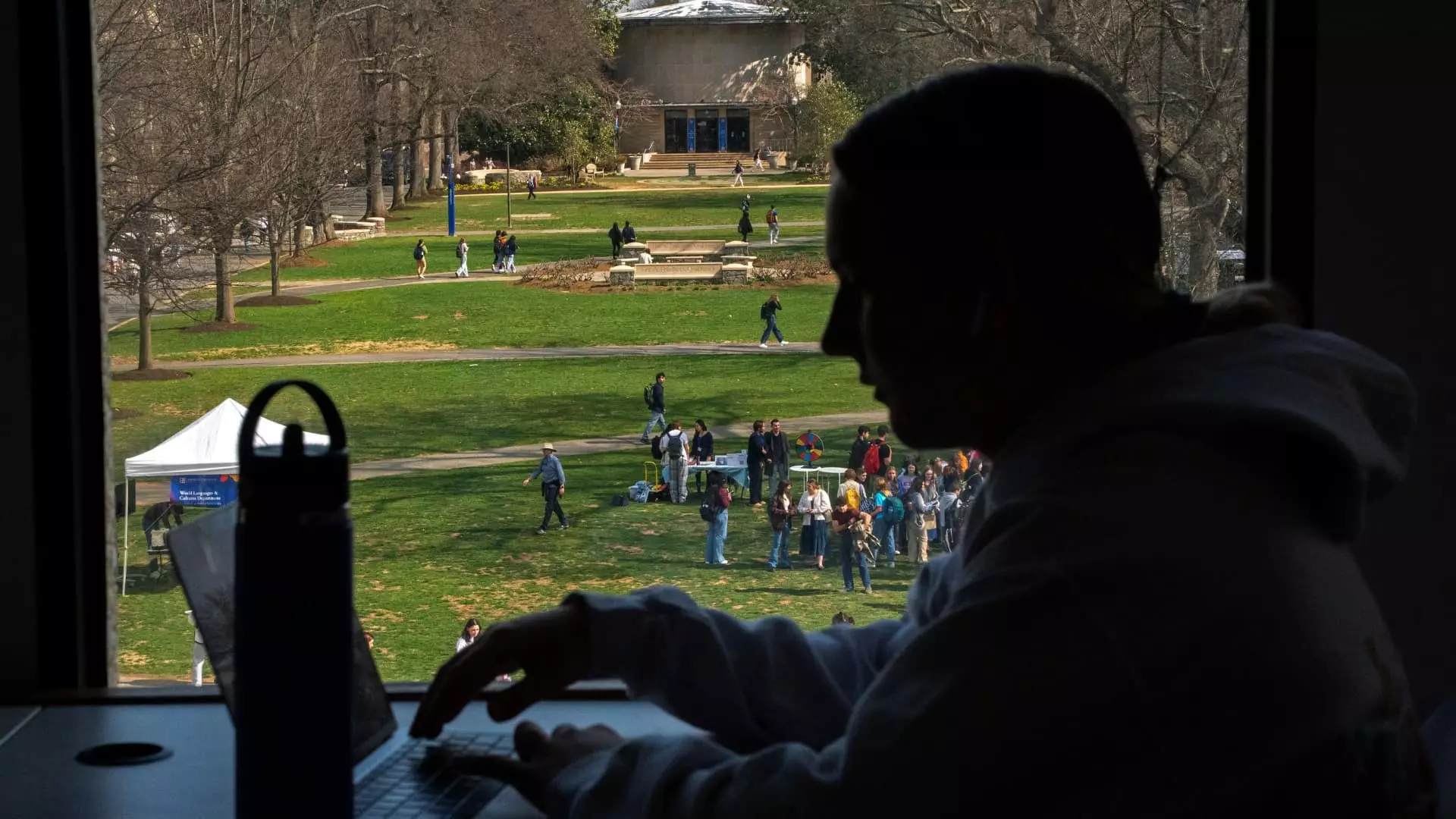As we approach the tumultuous economic landscape of 2025, a staggering number of more than 9 million student loan borrowers are teetering on the edge of financial ruin due to delinquencies. The Federal Reserve Bank of New York has issued a dire warning: these individuals could experience astonishingly steep declines in their credit scores—some by as much as 171 points. This alarming potential loss is not merely a statistic; it represents a cascade of adversities that could ensnare borrowers in long-lasting financial hardship.
Credit scores are more than just numbers; they determine our purchasing power, our mortgage rates, and even our job prospects. A credit score of 670 and higher is generally considered acceptable, and yet, many borrowers, whose scores may be in the 600s or lower, will suffer more than just embarrassment—they will face an economic crisis that can be hard to escape. Those who have traditionally excelled in creditworthiness will feel the sting of that sharp decline the hardest, limiting their financial options and curbing their ability to regain their financial footing.
The Unforgiving Fallout of Missed Payments
For many, the pandemic provided a much-needed respite from the anxiety surrounding student loans. Payment collections were suspended, creating a false sense of security for millions. However, that relief has been short-lived, having officially expired on September 30, 2024. The implications of this change are grave; once those delinquencies appear on credit reports again, they will irrevocably tarnish credit standings, with repercussions lasting up to seven years.
The effects are far-reaching. Doug Boneparth, a financial planner with a keen understanding of these issues, warns that this imminent credit score penalty will severely restrict borrowers’ access to affordable financing. More troubling is the psychological toll this takes on those already struggling to make payments. It locks borrowers into a cyclical trap of elevated costs, diminishing opportunities for financial recovery, and exacerbated anxiety.
A Silver Lining: Navigating Through Financial Turmoil
Though the situation appears bleak, consumer advocates are quick to assert that there are opportunities for borrowers to reclaim control over their financial destinies. For instance, exploring affordable repayment options—like income-driven repayment plans—can dramatically reduce monthly obligations. With some borrowers potentially qualifying for payments as low as zero dollars, these plans can provide much-needed breathing room.
Another option is the application for deferments or forbearances, allowing borrowers to pause payments without the immediate risk of being flagged as late. While the notion that a payment pause can still negatively impact credit reports may sound counterintuitive, experts like Mark Kantrowitz emphasize that these measures can still be less damaging than outright delinquency.
Those already trapped in the vicious cycle of default are encouraged to consider rehabilitation or consolidation strategies, which can shift their loans back into a current status. Rehabilitation requires a commitment to making nine voluntary and reasonable payments over ten months, while consolidation can offer a streamlined approach to breaking free from default.
The Importance of Awareness and Proactive Measures
Awareness is the first step toward reclaiming financial health. Borrowers are urged to regularly monitor their credit reports through reputable services like AnnualCreditReport.com. Checking for accuracy across the three major credit bureaus—Experian, Equifax, and TransUnion—can be a vital defense against erroneous reporting that could further damage credit scores.
Knowledge is power in the fight against student loan-related financial challenges. By staying informed, borrowers can identify the right options tailored to their circumstances, implement strategic financial maneuvers, and ultimately reposition themselves on the path toward recovery.
In this era where financial literacy has become crucial, it’s essential for borrowers not to sit idly by. Instead, they must actively engage with their loan servicers and advocate for their rights. The clock is ticking, and the window for making impactful changes is shrinking. As financial woes loom on the horizon, the responsibility falls on individuals to be informed, proactive, and strategic in navigating their financial futures. This isn’t just a personal responsibility; it’s a societal imperative that necessitates collective awareness and action.

